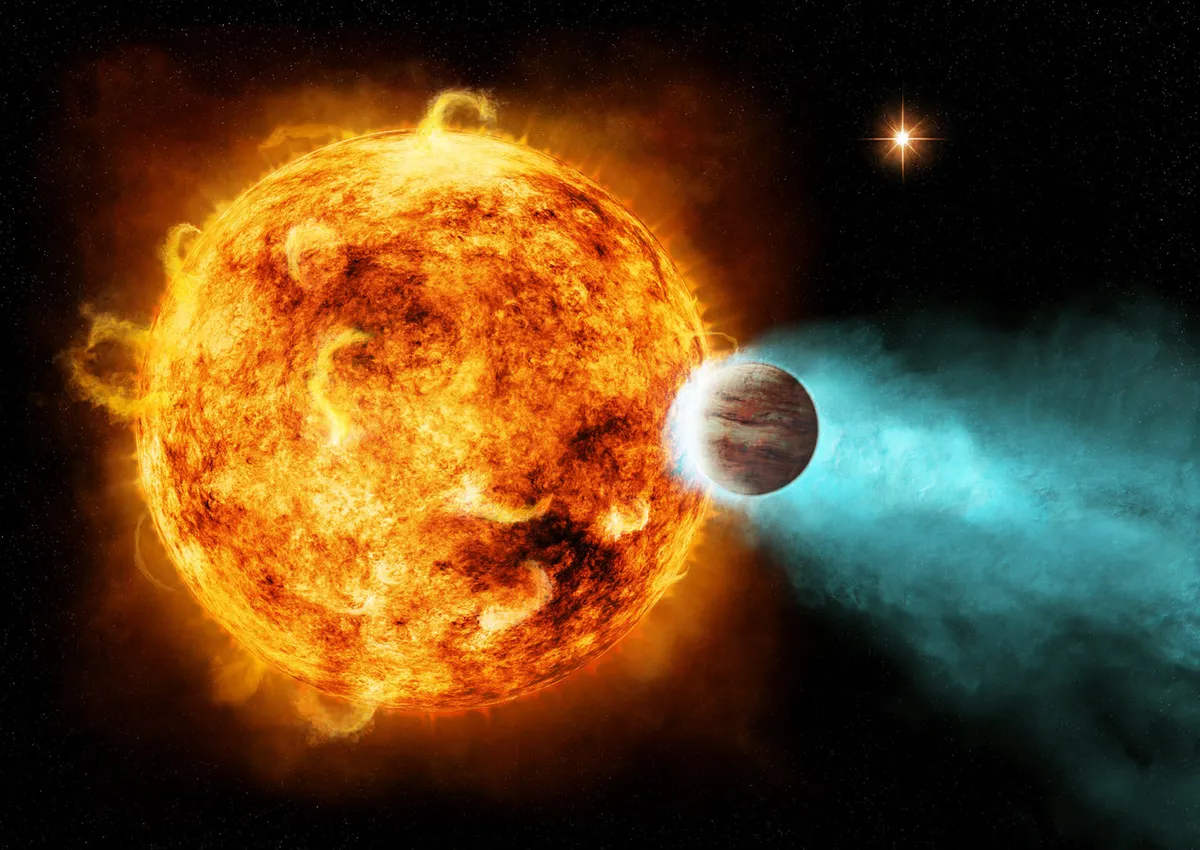An ‘eccentric’ exoplanet has been found to have one of the most stretched-out orbits of any planet ever seen.
It’s thought the extreme orbit is the beginning stage of the planet’s journey towards becoming a ‘hot Jupiter’, and could give new insight into how these planets form.

TIC 241249530 b and hot Jupiters explained
Hot Jupiters are gas giants much like our own Jupiter, but which orbit incredibly close to their stars.
Our current understanding of planet formation suggests it’s far too hot for planets to form in that location.
Instead, the leading theory is that these worlds were born in more distant orbits and then migrated inwards at a later date.

If this is the case, then it should be possible to detect exoplanets while they are undergoing this migration.
One potential example is TIC 241249530 b, discovered by the Transiting Exoplanet Survey Satellite (TESS). The planet’s orbit is highly elliptical, or eccentric.
At its closest, it approaches 10 times closer to its star than Mercury gets to our Sun, while at its furthest it’s as far away as Earth’s orbit.

In addition, the planet orbits the opposite way to its star’s rotation. Almost every planet known, including all those in our own Solar System, orbits in the same direction as its star.
The contrary motion of TIC 241249530 b could be a potential clue to why the planet began migrating in the first place.
While another pre-migration planet, HD 20782 b, was previously known, that example was not transiting its star.
This new example does, allowing the team to gain more detailed measurements of its orbit and to potentially examine the planet’s atmosphere to see how it is affected when it passes so close to
its star.
What next?
Astronomers will now analyse the planet’s motion to work out how it has changed over time and what it might do in the future.
It’s thought that the planet’s orbit will become more circular over time, as tidal forces from the star’s gravitational pull leach energy from the planet.
"While we can’t exactly press rewind and watch the process of planetary migration in real time, this exoplanet serves as a sort of snapshot of the migration process," says Arvind Gupta from NOIRLab, who led the study.
"Planets like this are incredibly rare and hard to find, and we hope it can help us unravel the hot Jupiter formation story."

